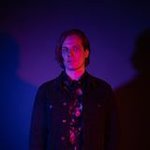-
Similar Content
-
Posts
-
The Tentacle Sync Timecode tool is the one I tried. I couldn't get it to work. But that is probably my fault, not the software. I seemed to get a file, but I couldn't turn it into anything meaningful.
-
I am glad to read you are able to get this up and running. Pretty much as long as you connect the camera and turn it on and wait a few moments for the computer to register the connection, you can then use Image Capture (which actually is a very decent program with a lot of options for transferring images from cameras to the computer) or Lightroom or other programs to move the images to your library. There are some drawbacks; connecting to the computer while it is in sleep mode will waste your time, the connection will not get recognized— you will have to unplug the camera, wake the computer and start over. Trying to connect while the screen saver is running may work, it may not, often not. If the computer goes into screen saver mode while the camera is connected and sitting idle, it usually stays connected when coming back out of screen saver, but if the computer mputer goes into sleep mode, the connection gets dropped and you have to unplug it and start over. I suggested having the camera turned off while connecting, this is to lower the possibility of static electricity discharges frying either the camera or the computer or both. A lot of times you can connect while the camera is turned on, but not always, sometimes you have to unplug, turn it off, reconnect and turn it back on. A lot of this comes from Apple’s approaches towards keeping USB devices from hijacking your computer, some is just hubris and some is from the vagaries of chance. p.s. Your laptop should be able to connect to the camera.
-
By simonhuegly · Posted
Hi Chas, I am just fallen into the rabbit hole of investigating how to upgrade my X-T4's video sound... Loving the idea of time code sync, I am now quite concerned that the X-T4 doesn't support it, although I have already seen different statements on the net, like here: https://youtu.be/xja27RmvbhE?si=hIch3Tu_MH_pWSBH&t=571 I have to admit, this guy's "explanation" gets quite confusing in his further discourse ...:) BUT, as you wrote that you use Tentacle Sync for Windows!, did you also try with their windows-only software "Time Code Tool" which you find here?: https://tentaclesync.com/timecode-tool Would love to here if you found a workaround with the XT4 Best, Simon -
It occurred sometime when I focus. It is not silent
-
This is the video for the focusing sound. Anyone can help?🙏🏻🙏🏻🙏🏻thanks a lot IMG_3226.mov
-


Recommended Posts
Join the conversation
You can post now and register later. If you have an account, sign in now to post with your account.
Note: Your post will require moderator approval before it will be visible.